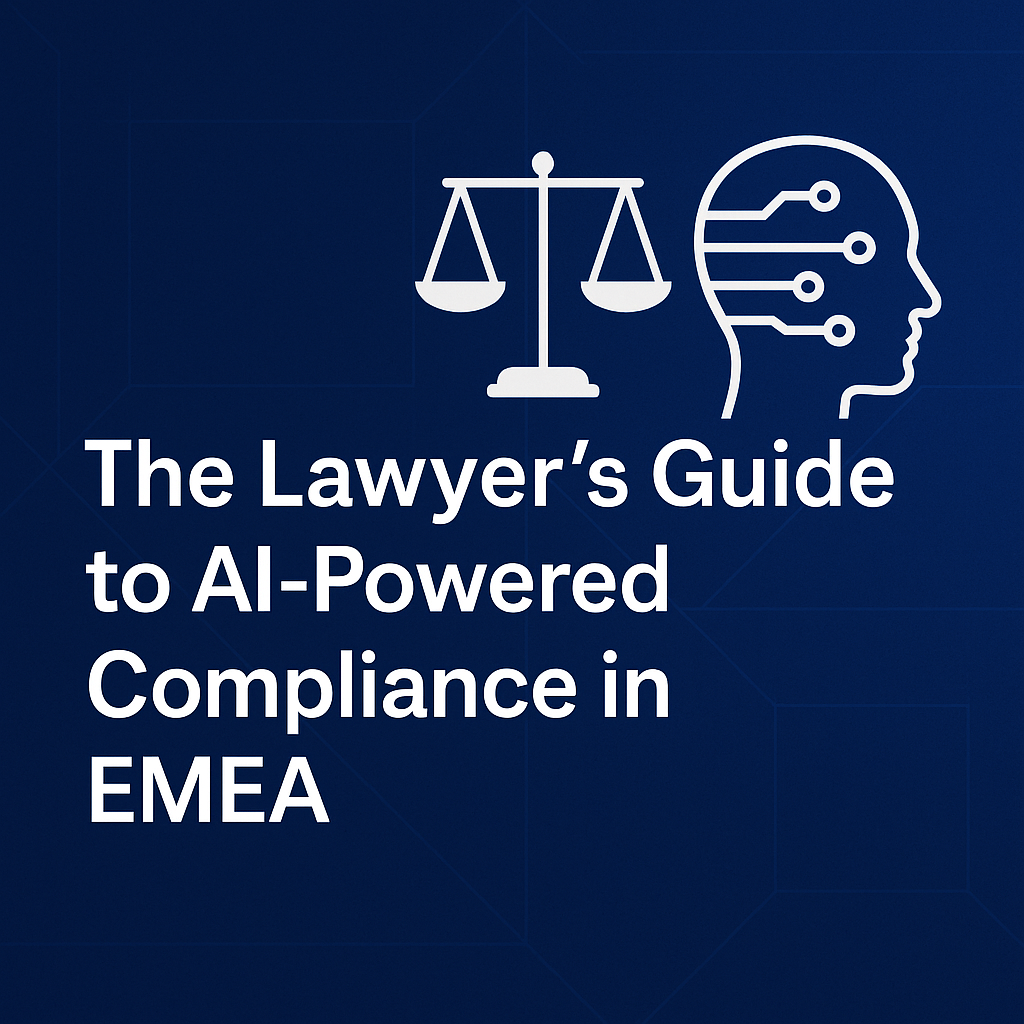
The Lawyer's Guide to AI-Powered Compliance in EMEA
AI compliance for law firms is no longer a future issue. Across EMEA, clients and regulators now expect firms to prove that AI tools are lawful, explainable, and secure. The opportunity is real: compliance done right makes AI usable at scale. The risk is also real: gaps in compliance expose firms to regulators, courts, and clients alike.
This guide explains what "AI compliance for law firms" really means, how obligations differ across the UK, UAE, and EU, and how a lawyer-first approach like Qanooni's helps firms demonstrate compliance without slowing matters down.
Why compliance has become the frontline for AI
The regulatory mood has hardened. In the UK, the Solicitors Regulation Authority has been clear that duties of confidentiality, privilege, and accuracy travel with AI. The ICO expects firms to apply UK GDPR principles of fairness, lawfulness, transparency, and accountability, backed by explainability. In the UAE, the DIFC Data Protection Law 2020 and ADGM's rules mirror GDPR in structure but diverge in detail on consent, transfers, and processor obligations. In the EU, GDPR remains the anchor whilst the EU AI Act introduces duties for general-purpose AI from August 2025.
The message is consistent: AI can be used, but lawyers must show how it respects the law, preserves professional duties, and leaves an audit trail regulators can trust.
What AI compliance for law firms really means
Compliance is broader than privacy policies. It covers data protection and retention rules, but also privilege boundaries in AI workflows, duty-of-confidentiality controls, provenance and audit trails for inputs and outputs, and the ability to explain how a particular clause recommendation or redline emerged. It also extends to cross-border realities: where the matter team sits, where client data lives, which sub-processors touch it, and how transfer mechanisms or localisation policies are enforced in practice. A programme that stops at a privacy policy will not persuade a GC or a regulator; they want to see how the firm's day-to-day drafting and review flows actually respect these constraints.
Five challenges firms face today
- Fragmented rules: UK GDPR, EU GDPR, DIFC DP Law, and ADGM each impose slightly different obligations.
- Client assurance: General Counsel increasingly demand written confirmation that no client data trains third-party models.
- Privilege boundaries: Generic AI tools rarely have privilege-aware safeguards.
- Verification burden: Regulators in both the UK and UAE expect documentation of how AI was used.
- Scalability: Manual compliance processes collapse when stretched across dozens of matters and offices.
Manual compliance vs AI-powered compliance
| Aspect | Manual compliance | AI-powered compliance (Qanooni) |
|---|---|---|
| Monitoring | Lawyers track data flows manually | Automated detection and flagging across matters |
| Audit trails | Fragmented or missing | Full logs of AI-assisted outputs |
| Explainability | Human summaries only | Clause-by-clause reasoning surfaced |
| Response speed | Weeks to prepare evidence | Hours to generate regulator-ready reports |
| Scalability | Limited by headcount | Consistent across UK, UAE, and EU offices |
How Qanooni enables AI-powered compliance in EMEA
Qanooni was designed around EMEA's regulatory reality. Outputs are grounded in legal authority databases and firm knowledge, which reduces hallucinations and ensures verifiable citations. Workflows align with GDPR, UK GDPR, DIFC DP Law 2020, and ADGM rules, so lawyers can evidence compliance in each jurisdiction. Because Qanooni runs inside Microsoft Word and Outlook, data stays in Microsoft 365 where firms already enforce retention and access policies.
Passive playbooks capture firm standards on confidentiality, privilege, and data transfers. The Review Assistant applies those playbooks clause by clause, flagging deviations and omissions. Each draft is accompanied by reasoning and citations that a lawyer can verify, and every interaction is logged to create an audit trail.
For UK firms, this means showing clients and the SRA how confidentiality and privilege are preserved. For UAE firms, it means demonstrating compliance with DIFC and ADGM regulators. For clients, it means confidence that their information is safe and compliant.
FAQs
What is AI compliance for law firms?
It means ensuring that AI systems used in legal work comply with GDPR, UK GDPR, DIFC DP Law, ADGM rules, and duties such as confidentiality and privilege.
Is AI compliance only about data protection?
No. It also includes privilege, auditability, explainability, and client assurance.
Can AI replace compliance lawyers?
No. AI provides monitoring, reporting, and audit trails. Lawyers interpret obligations, manage risk, and advise clients.
How does Qanooni support compliance across EMEA?
By grounding outputs in authority databases, mapping workflows to GDPR, UK GDPR, DIFC, and ADGM rules, and keeping lawyers in control.
Closing thought
Compliance is not a brake on AI adoption in EMEA; it is what makes AI usable. The firms that succeed will be those that embed regulatory and professional duties into their workflows, prove what happened when asked, and keep lawyers in control of the outcome.
Qanooni was built for that reality: lawyer-first, authority-grounded, Microsoft-native, and auditable across the UK, UAE, and EU.
👉 Want to see how Qanooni supports compliance on a live matter? Book a demo today.